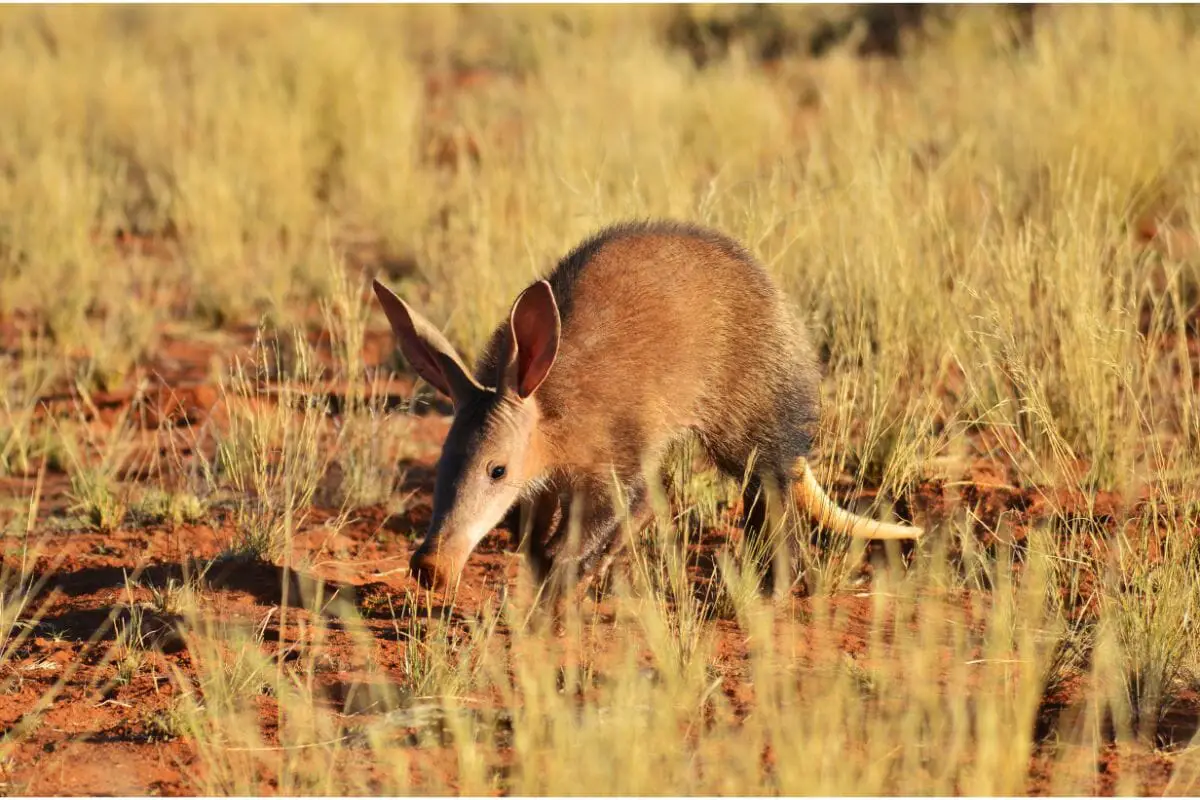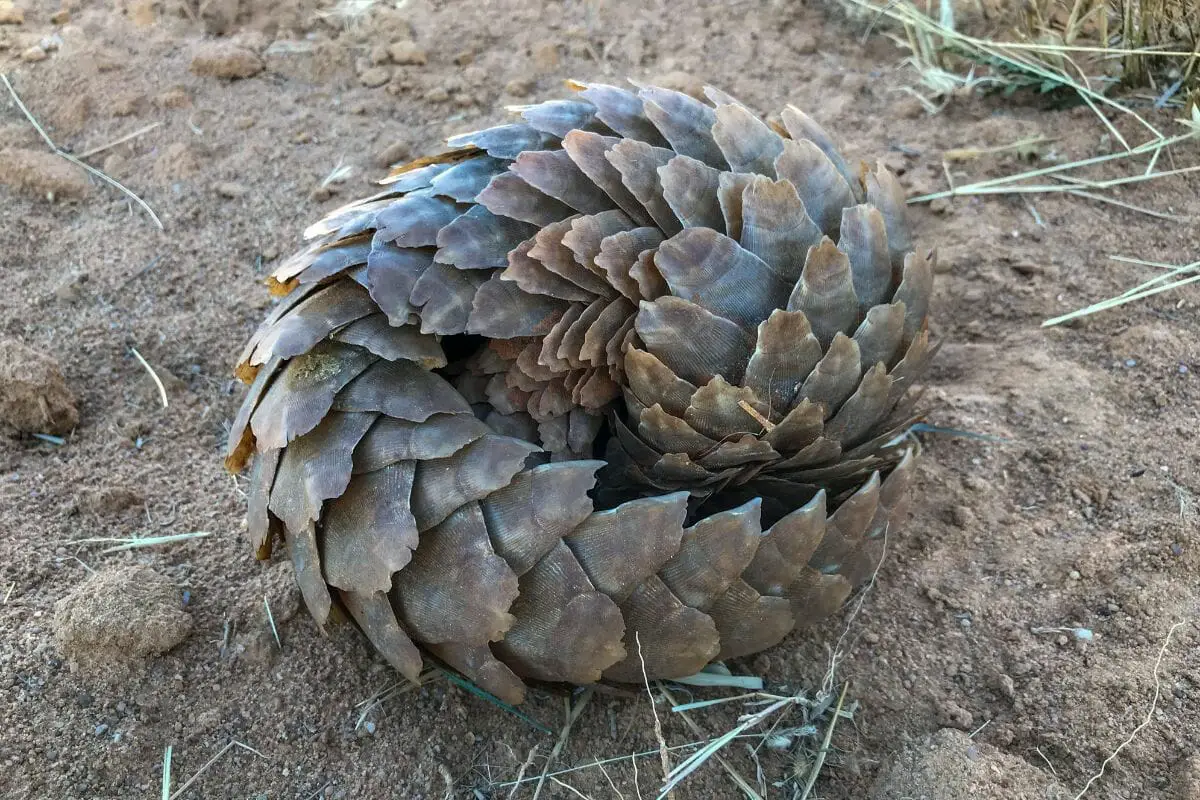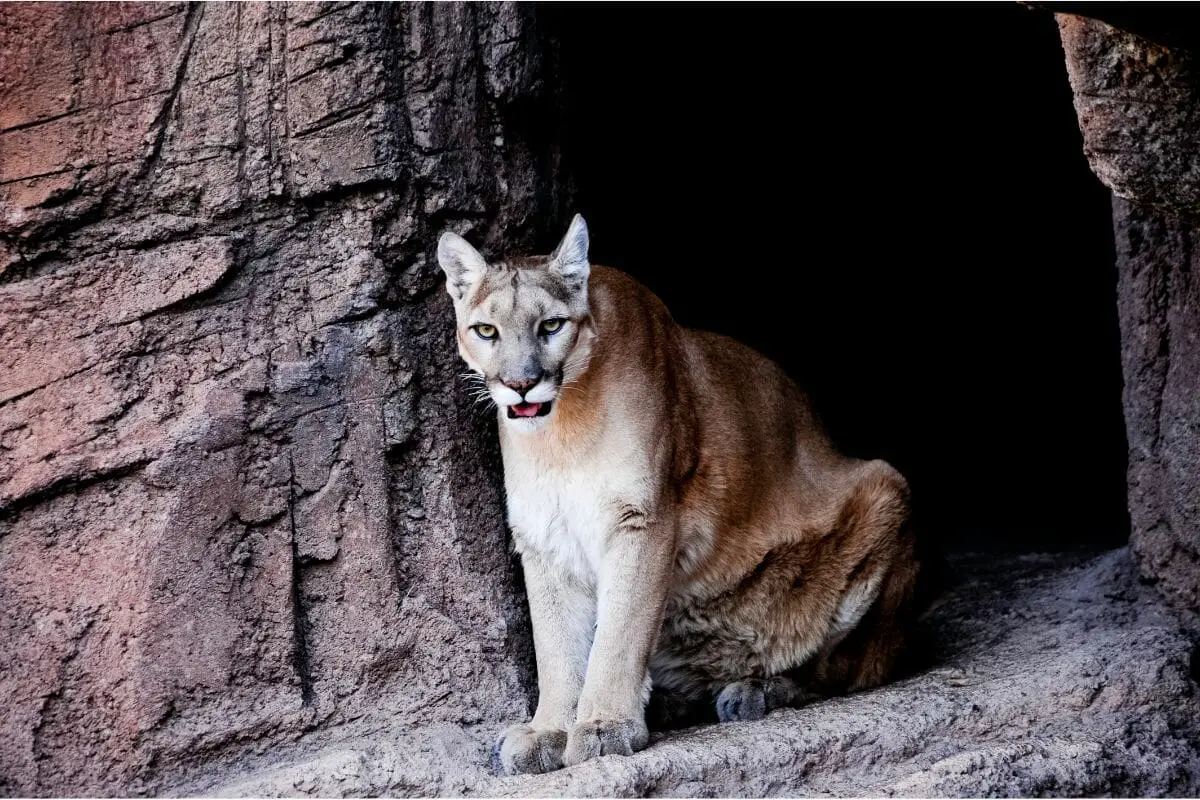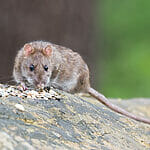Have you ever wondered which animals are the shyest? It’s fascinating to think about the variety of creatures that prefer solitude or get nervous around others. From deer to large predators, many animals show a surprising level of timidity.
In this discussion, we’ll explore some of the most timid animals on our planet. Recognizing these creatures can help us better appreciate and protect them.
Learn about the behaviors of 18 of the world’s most timid species. Whether they are predators or prey, these animals have unique ways of coping with the world around them.

18 Most Shy Animals in the World
Aardvark
Aardvarks are shy creatures that live in Africa. They are nocturnal, meaning they sleep during the day and come out at night.
Thanks to this fact and the fact that they’re solitary animals this means they don’t interact with other animals a lot and on the off chance they do, they will become frightened and run away.
Aardwolf
The Aardwolf is another shy creature that lives in Africa. It resembles both a wolf and a hyena, but has more in common with the wolf.
Aardwolves are nocturnal and like to avoid humans as much as it can. The only time it will come into contact with humans is when it’s looking for food.
Bat-Eared Fox
Another shy animal from Africa, the bat-eared fox is also nocturnal and very shy. If you stumble across one, just remember that it’s more scared of you than you are of it.
Dogs And Cats
Not all dogs and cats are shy, but when they are, it is usually because they are traumatized by ill-treatment by their owners, or were attacked by other animals when they were puppies or kittens.
Stray dogs and cats are more likely to be shy than cats and dogs who are kept as pets.
Giant Pandas
Despite their large size, giant pandas are one of the shyest animals on the planet. They live deep in the jungle, and in the dense forests it’s hard to make them out. They don’t roam far and like to keep themselves to themselves.
Meerkats
Meerkats are tiny creatures who prefer to stick together in a group. It is highly unlikely you will spot a meerkat on its own. If you spot a meerkat, it will either call for help from its meerkat family, or it will rush away to safety.
They are too timid to wander off on their own, and when looking for food will go in groups so they can keep an eye out for predators.
Giraffes
Another large animal that is surprisingly shy, giraffes are easily startled, especially at night. If they live in a wildlife sanctuary, it can take them a while to get used to their surroundings. They enjoy their own company and that of their families.
Leopards
Despite being predators, leopards are also shy. They prefer to live in solitude, particularly the males. They like to live high up in the trees on their own.
But while they are shy, don’t be fooled by their timidness, as they are still dangerous and cunning predators.
Deer
As prey, deer are naturally shy as they need to be alert for predators. As soon as they sense danger, they run swiftly away, and this includes when they see humans who may mean them no harm. Deer live in close-knit groups.
Pangolins
Pangolins are unusual creatures for many reasons. They’re the only mammal who has scales, and like armadillos, will roll up into a ball to protect themselves.
Their scales act as a shell to protect them from harm. However, due to being hunted for their scales, pangolins are on the brink of extinction.

Porcupines
While porcupines are shy creatures, they have a pretty ferocious defense system if they feel threatened. When they sense a threat, they raise sharp, pinpointed quills and make loud sounds to warn off whoever is approaching them.
If you don’t back away, you’re likely to get hit by their sharp, spiky tails.
Sloths
Sloths prefer to live a solitary life, and this is especially true of male sloths. Sloths are known for being lazy, but they are more active at night.
Unlike other animals on this list who prefer their own company but like to be around family, sloths (see also: Are Sloths Endangered?)will even reject their family members.
Snakes
Many assume snakes to be cunning and vicious animals who slither through the undergrowth and are not afraid to bite or attack anybody.
However, snakes are rather shy. They will only come out of their hiding place to get food, and they will bite if someone gets too close and they feel threatened.
Squirrels
Squirrels are another unsurprising addition to our list. Squirrels are skittish and are quick to flee when they see humans or animals (see also: Animals That Look Like Squirrels)that are bigger than them. They can climb trees at an impressively quick speed.
Rabbits
It probably doesn’t come as a surprise to see rabbits on this list. If they see a human or a bigger animal approaching they will quickly jump (see also: Animals That Jump)to safety and hide in the undergrowth.
Tapirs
A tapir is an extremely shy animal, but it isn’t afraid to defend itself. Sometimes it will run away from danger, or it will attack with its powerful jaws. However, tapirs are herbivores and therefore not predators.
Turtles
Turtles are also an unsurprising addition to our list. You may have seen a turtle tuck its limbs inside its hard shell to protect itself when frightened.
Zebras
Zebras are found in Africa and are surrounded by predators such as lions, cheetahs, leopards, and hyenas, so it makes sense that they are shy, nervous animals!
They stick together to protect themselves, and will sometimes fight back from being attacked by kicking with their hind legs.
FAQs
Which animal is very timid?
The aardvark is a notably timid animal. Native to Africa, these nocturnal creatures are solitary by nature, often becoming frightened and fleeing if they encounter others.
Which animal represents shyness?
The giant panda represents shyness well. Despite their size, these creatures prefer solitude and inhabit dense forests, making them elusive and reserved.
Final Thoughts
We hope our article has shown you that it doesn’t matter if an animal is a predator or prey, any animal is capable of being shy.
Environment can be a big factor to how shy an animal is, and animals that live in isolated and sheltered areas are more prone to shyness than animals who live in exposed environments.
- What Should I Do If A Koala Bites Me? Safety Guide - 2024-05-30
- Are Kangaroos Born Without Hind Legs? A Fascinating Journey - 2024-05-30
- Animals That Look Like Squirrels - 2024-05-30









